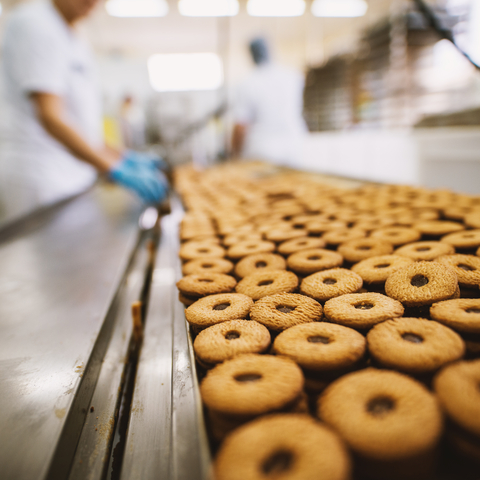How to Choose the Best Packaging Materials for Food Products
[This is Part 2 in a series of three articles on packaging. You can find Part 1 on things to think about when packaging your food product and Part 3 on the actual design of your food packaging. This post will cover the actual materials and resources for picking your packaging.]
When it comes to food packaging materials, the good news is that you have lots of options. Of course, the bad news is that you have to make lots of choices. As we mentioned in Part 1, your decisions will depend on what works for your product and with your budget.
Types of Food Packaging
The typical categories of food packaging materials are glass, plastic, paper, and metal. There are new materials being used for packaging all the time, including wood, bamboo, and even food by-products, but those might not be readily available or affordable. Plastics range from films (like cling wrap) to various molds (like clamshells). Paper is probably the most versatile material and includes everything from coated sheets to paperboard to laminates and cartons. Metals can be foils or cans and tins. And all of these materials show up in hybrids like metalized paper or enameled cans or plastic-lined cartons. Here you can see many examples of blank packages.

Here are just a few packaging solutions for fruit, vegetables, and poultry.
Each material has an ideal use. Plastics can be strong and inexpensive. There are so many different types that they can work with many different foods, but not all of them are good moisture barriers or air barriers. Paperboard is cheap, flexible, and easy to decorate, but it might not be safe for direct food contact if it's been recycled. Tin can't work with anything acidic without being coated, but it keeps foods safe from air, water, and light.
The goal is to find a material that can balance protection, cost, waste, and design considerations. Glass, for example, is a great material because it's inert (it doesn't react with foods) and impermeable (substances don't pass in or out of it), but glass is heavy and makes transportation costs high. It can also be hard to stack efficiently and, of course, it can break, and both of these features can increase your overall costs even though the glass itself isn't expensive.
(For really detailed information on all the options, with comparisons and caveats, you can look at this article, especially Table 6. Beware, it's a little intimidating, but quite useful.)
Materials for Transporting Your Goods
If your food is being shipped, you usually need containers for your individual packages and for bigger shipments you'll need pallets for those containers. Generally, smaller items are going to be boxed and stacked on pallets. Bulk items might be in large bags stacked on pallets. Shipping boxes for food items are typically glued (rather than folded) together for maximum strength. You need boxes that are the right size and are approved for food; that means every component is approved, from the dye to the glue.
Once you have those building blocks to protect your individual packages from any breaches, you need to make sure that the boxes are secured to the pallet so they don't slide around and suffer from any breaches themselves. One solution for that is stretch wrapping. Another is shrink wrapping. The goal is to create a secure, single load that gets to its destination as a unit.

That's how you make sure a pallet stays in one piece.
Finding What You Need
Doing the research and finding suppliers can be daunting when you're already spending all of your time making your product. We recommend Specialty Food Resource to all our users as a great general resource for small food businesses, and the site includes a list of potential resources for for packaging.
For basic DIY packaging, you can order supplies online at places like Paper Mart. You can try Tenka for stock solutions for flexible packaging (bags and pouches). For more custom packaging, places like this and this could be useful. You can find other possibilities here, here, here, here, here, here, and here. We don't have personal experience with these companies, but they are a good starting point.
Contacting a packaging association can also be a great way to find a packaging distributor, as opposed to a supplier, who can help you with all the technical details. You can find a list of different associations at Packworld. And this site gives an overview of packaging and labeling and includes some links for suppliers and distributors in Canada.
And of course the best way to find great leads is to talk to people. Try asking other food makers and business owners for personal suggestions and even introductions to local companies to work with. In that spirit, leave a comment below if you have a great resource or a supplier you love working with!





